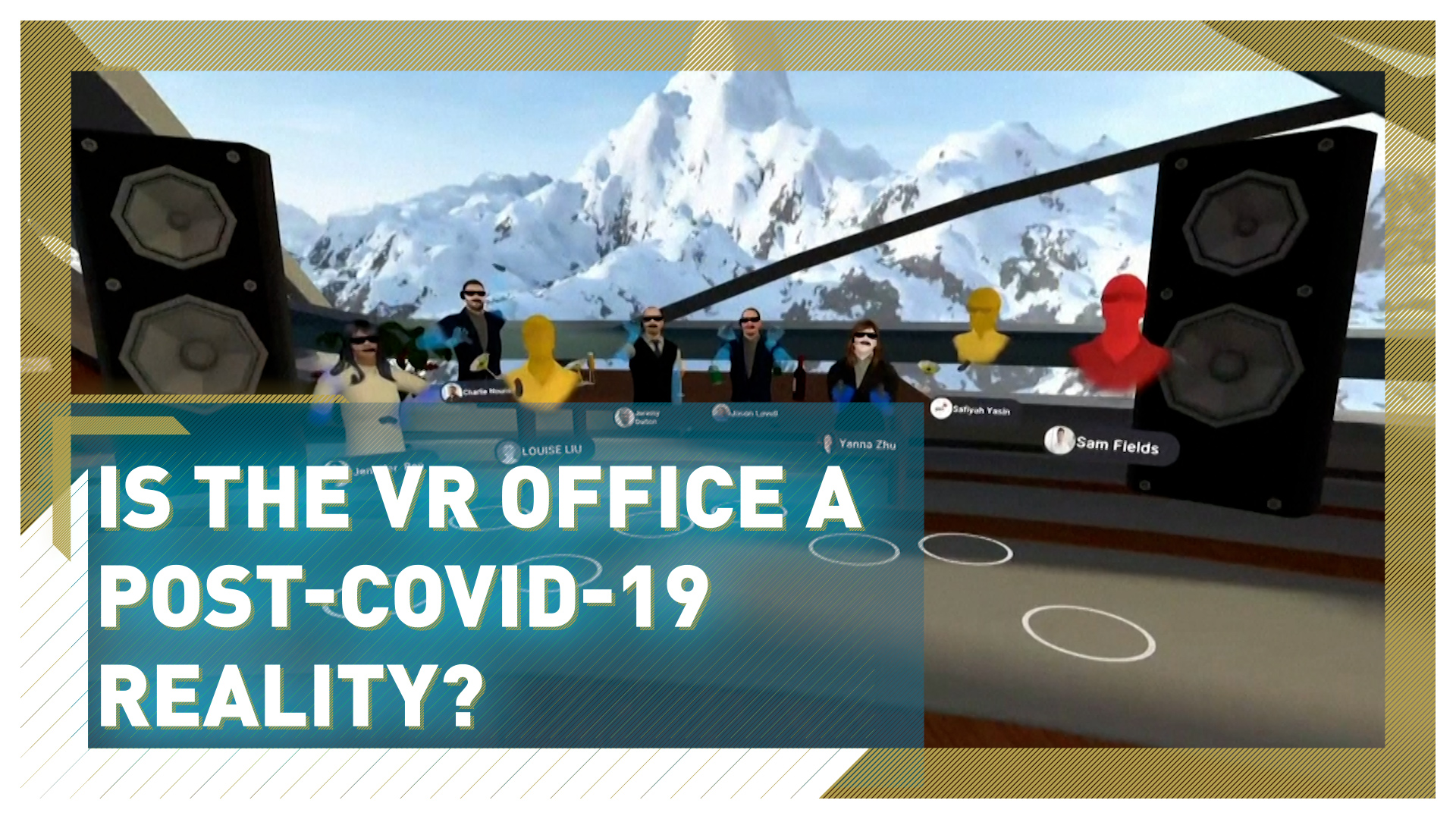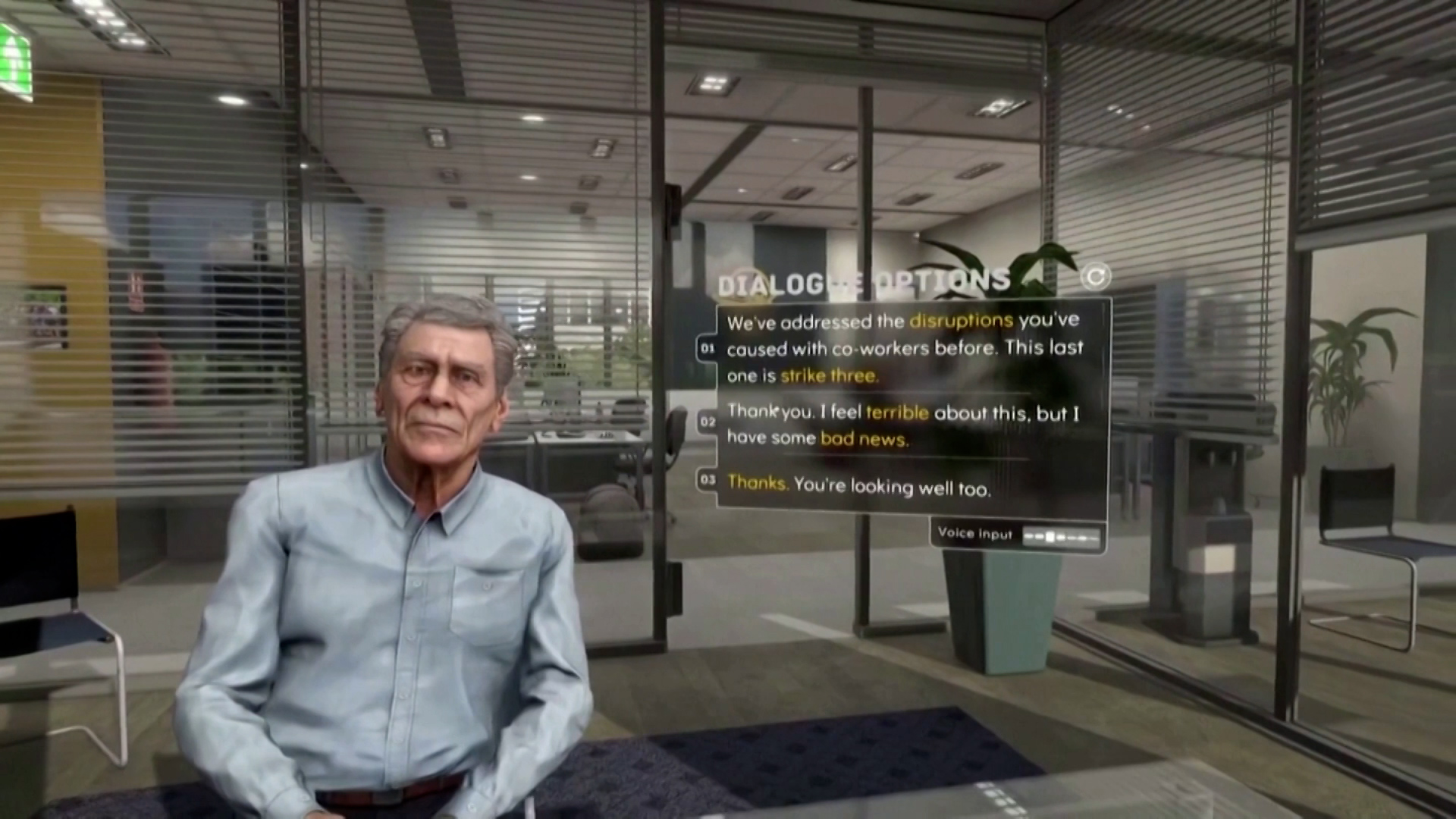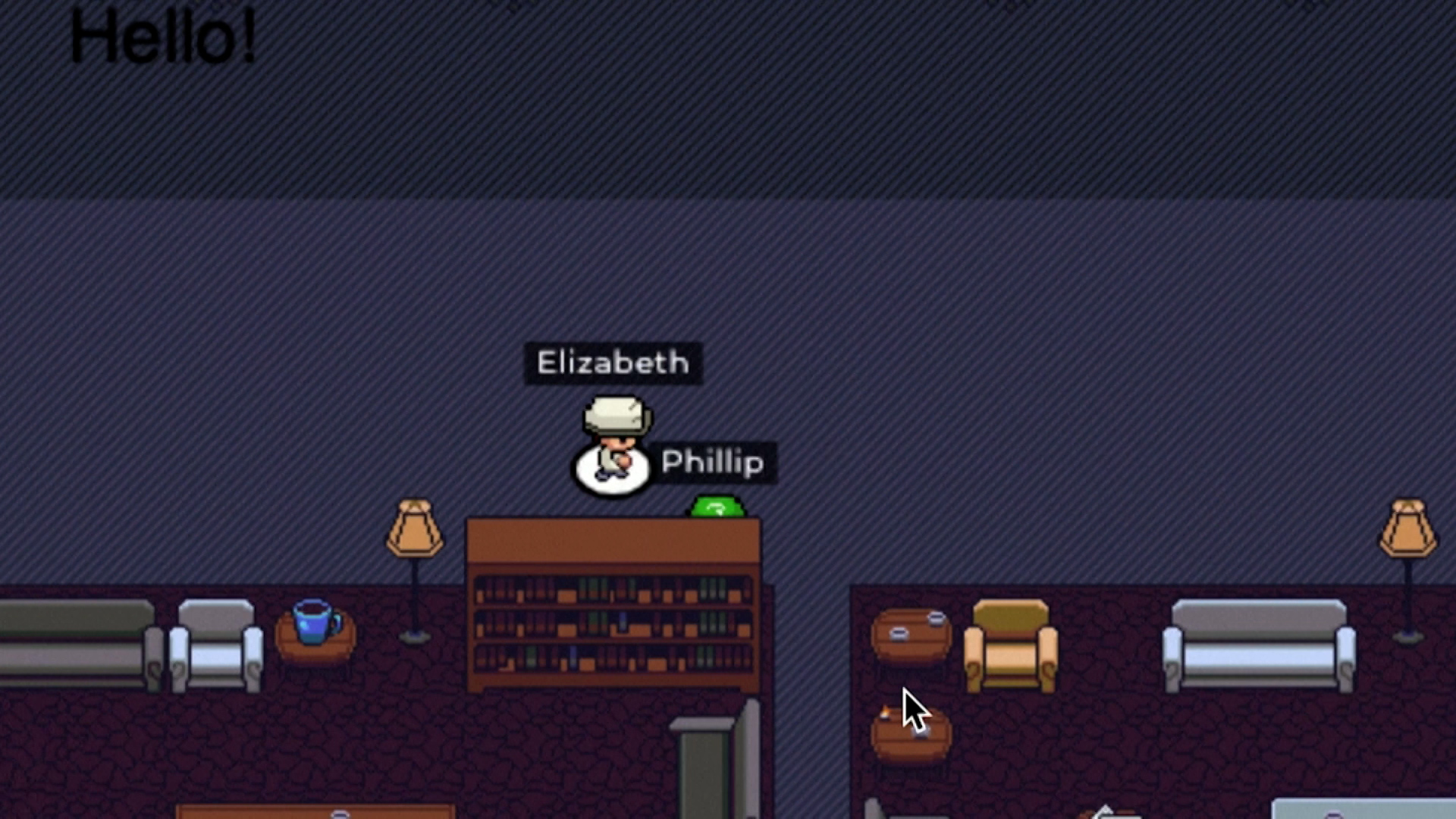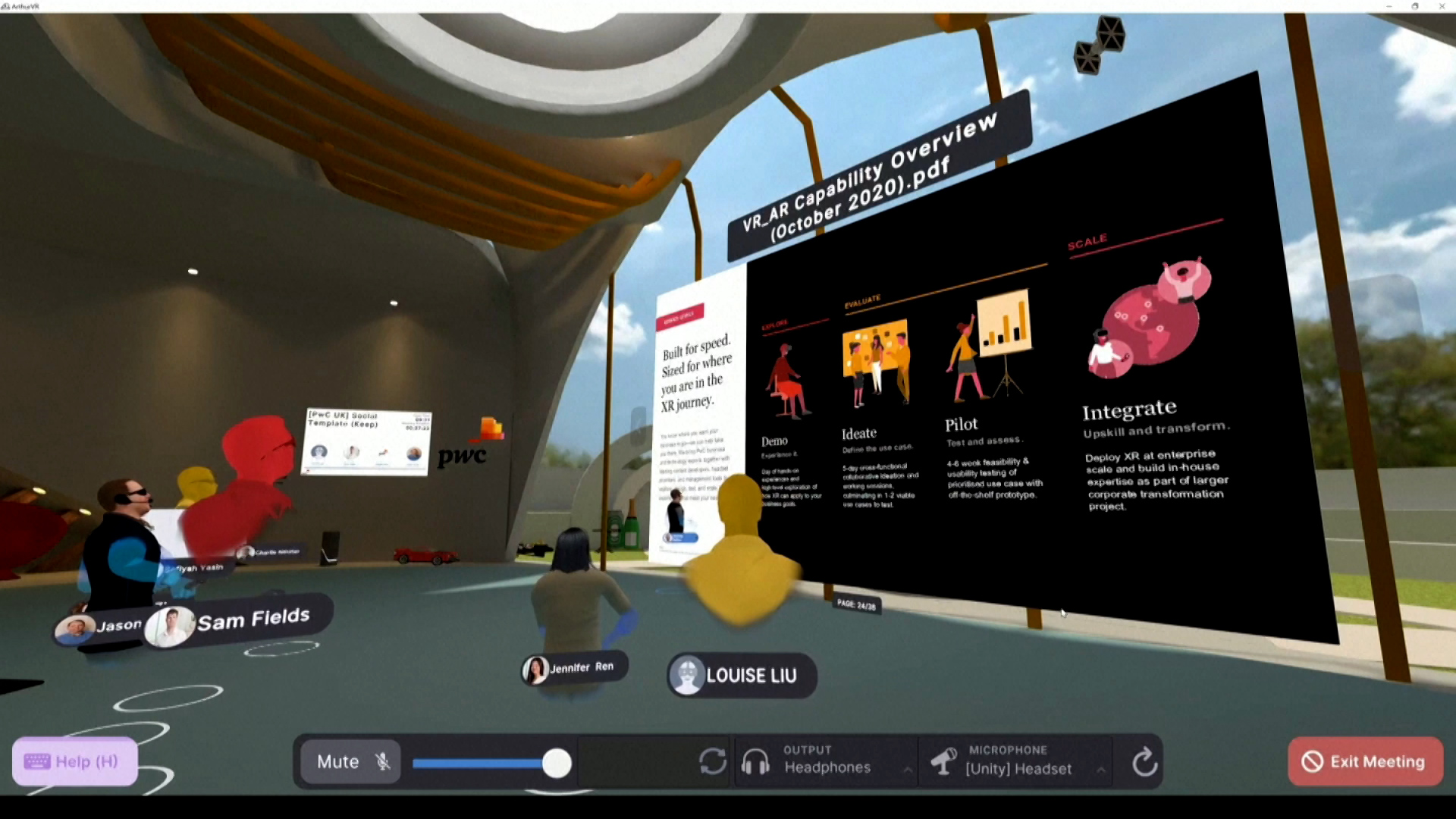02:08

Since the beginning of the pandemic, millions of office workers have been working remotely from home, their only contact with their colleagues and managers being their exchange of emails, the daily Zoom meetings and conference calls.
Now virtual reality (VR) technology is offering the chance to step back into the office, respecting COVID-19 restrictions, and experience that sense of camaraderie and that buzz that many have been missing.
"You have the sense that you're in a real meeting, so if you're using those VR networking platforms, then you can meet as avatars with your other coworkers. You could also collaborate on design," says David Ripert, chapter president of the UK branch of the global VR/AR Association.
He describes VR as the "silver lining" of the pandemic, as companies are using it more and more to recreate physical events and conferences.

An avatar created for a VR training exercise. Talespin/Reuters
An avatar created for a VR training exercise. Talespin/Reuters
As much as employees initially welcomed working from home and the freedom it gave them to sneakily wear sweatpants during meetings and spend more time with family, many are missing the underestimated pleasure of being in the office.
"People have noticed that it's actually pretty fluid to kind of work remotely, but what's really missing is the culture aspect, like it feels isolating because the only time you're really interacting with your coworkers is just during these meetings," says Phillip Wang, CEO and co-founder of Gather, a virtual platform that reproduces real physical offices in the setting of a 1980s video game.

A virtual office on the Gather platform. /Reuters
A virtual office on the Gather platform. /Reuters
VR offers the possibility to enter a virtual office where employees can socialize pretty much as they would have in real life, chatting around the coffee machine.
"The gist of the platform is kind of like, it allows you to move between conversations just as you would in real life," says Wang. "So if you have a group of more than eight people, for example, you can split off into different groups and moving between the conversations is just like you walking around."
Companies are hoping that VR will help resuscitate team spirit and facilitate welcoming new colleagues.
But there are also other benefits to moving to the virtual world. The financial sector actually discovered that it could even save money by moving events and training online, with the additional benefits of cutting carbon emissions related to business travel.

Employees attending a VR meeting. /Reuters
Employees attending a VR meeting. /Reuters
Research conducted by PwC found that advances in immersive technology could save banks as much as $1.5 trillion by 2030. Virtual reality applications alone could save nearly $500 billion.
But the VR experience might not be affordable for everyone yet: Microsoft's HoloLens 2 headsets, for example, cost $3,500 each. Interest in using VR for working purposes is likely to accelerate improvement in the technology and bring more competition in the market, with start-ups creating cheaper products.
Industry experts suggest that even after the pandemic, part of our working experience might stick to the virtual world.
Video editor: Sam Cordell
Source(s): Reuters

